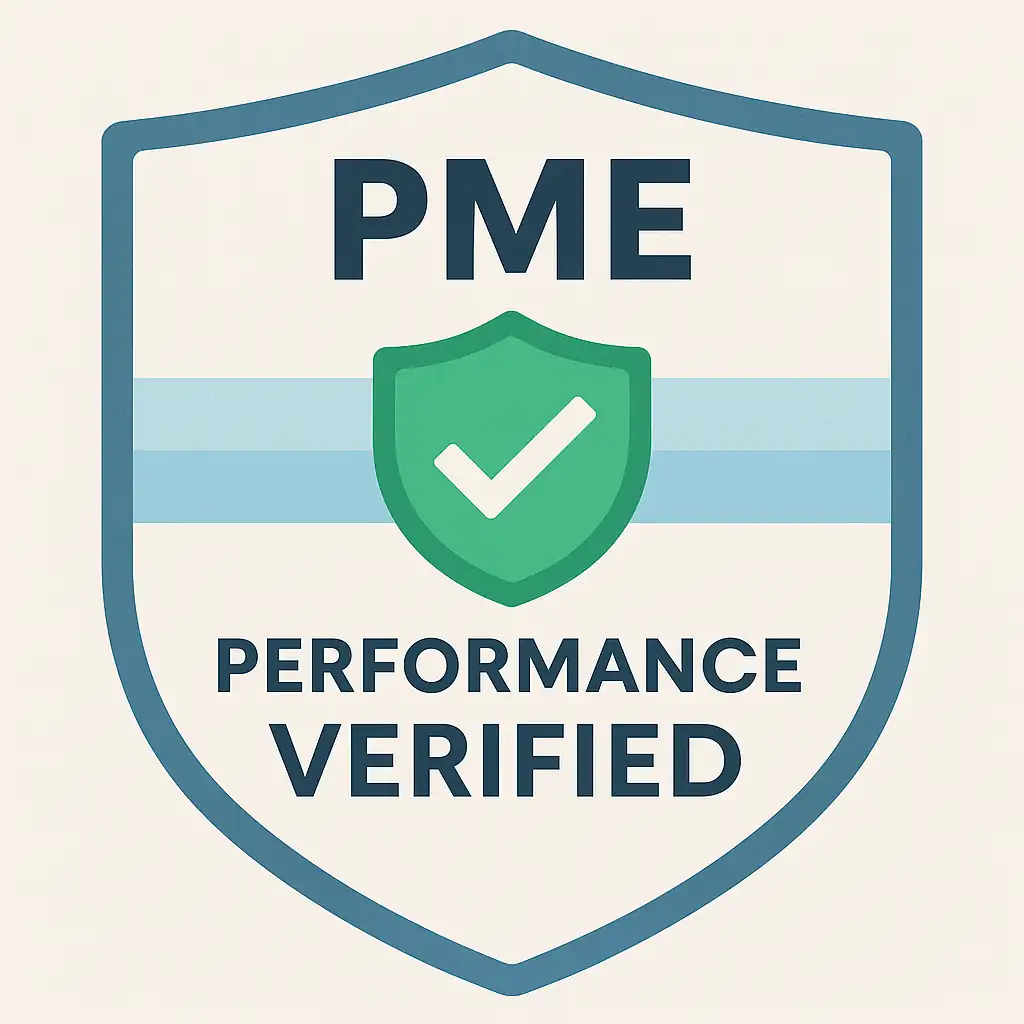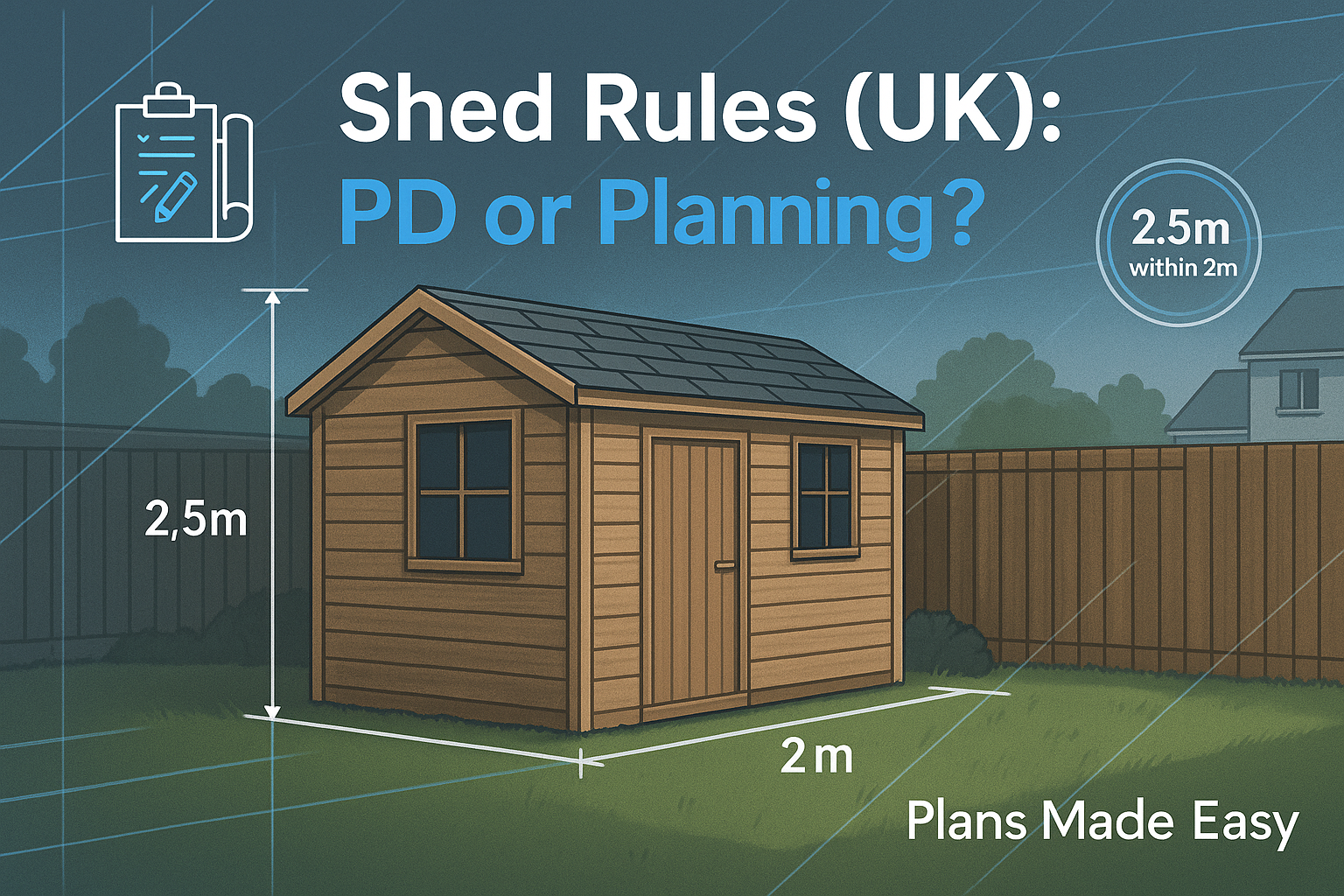Share this post:
Planning Permission for a Shed (UK)
A clear, local-friendly guide to UK rules for garden sheds — when you can use Permitted Development, when you’ll need planning permission, and the common council “quirks” that trip people up.
Unsure if your shed needs planning?
Send us your sketch and a few photos — we’ll tell you in plain English if it’s PD or needs an application.
🎥 Watch: Planning Permission for a Shed (UK) — Rules, Sizes, Council Quirks & PD Checklist
Prefer to watch instead of read? Here’s our quick 3-minute guide on shed planning rules 👇Quick Summary
Many domestic sheds fall under Permitted Development (PD) — meaning no planning application — if you meet rules on height, size, position and use. Watch for Article 4 Directions, conservation areas, and front garden placements, which often remove PD rights or require stricter control. Building Regulations usually don’t apply to standard timber sheds, but larger/heavier structures or those with electrics may trigger extra requirements.
Do you need planning permission for a shed?
If your shed is a typical domestic garden building used for incidental purposes (storage, hobbies, a small workshop) and you meet the PD limits, you likely won’t need planning permission. You will need planning if you exceed limits on height/size, put it in the front garden (where it affects the principal elevation), or live in an area where PD rights are restricted (e.g., conservation area, Article 4).
Permitted Development basics (sheds & outbuildings)
Sheds fall under the PD rules for outbuildings at houses. To qualify, your shed must be:
- Within the curtilage of your house (your garden/plot).
- Incidental to the enjoyment of the dwelling (not primary living accommodation).
- Single-storey and within the relevant height limits.
- Not forward of the principal elevation (i.e., not in most front gardens).
- Compliant with coverage limits (total area of outbuildings/ extensions within the curtilage).
For the definitive national overview, see the Planning Portal and GOV.UK guidance.
Key size & height rules (at a glance)
- Maximum overall height: up to 4m for a dual-pitched roof; 3m for any other roof.
- Eaves height: max 2.5m.
- Within 2m of a boundary: the whole shed must not exceed 2.5m in height.
- Coverage: outbuildings + extensions should not cover more than 50% of the curtilage (excluding the original house footprint).
- Front gardens: no outbuilding permitted forward of the house’s principal elevation under PD.
Position, boundaries & front gardens
Position matters. Placing a shed behind the principal elevation and respecting height vs boundary rules is key. Sheds in front gardens usually need planning due to impact on street scene. Corner plots can be sensitive where you have two prominent elevations.
Use, services & Building Regulations
Standard timber sheds used for storage rarely need Building Regulations approval. However, you may trigger Building Regs or other consents if you:
- Add a consumer unit/electrics (must be installed and certified by a competent electrician).
- Install plumbing or drainage (e.g., WCs or sinks) — drainage and insulation details may be required.
- Build in masonry or use a concrete slab of substantial size/weight close to boundaries or trees (foundations and surface water need consideration).
- Change the use to a home office with frequent visitors or business use (planning change of use issues may arise).
- Intend to use it as sleeping accommodation — this is not “incidental” and typically requires planning and Building Regulations.
Local council “quirks” to check early
Beyond the national rules, councils publish guidance and can apply extra controls. Typical local “quirks” include:
- Article 4 Directions: removing or limiting PD rights in specific streets/areas.
- Conservation Area guidance: tighter expectations for materials, scale and visibility from the street.
- Frontage sensitivity: resistance to sheds forward of the building line or on visible corner plots.
- Drainage & SUDS notes: expect requests to manage surface water from large bases/roofs.
- Aggregated outbuildings: councils may consider the total of sheds/garages/garden rooms when judging impact.
For a deeper grounding on the rules, see our pillar guides: Planning Permission (Pillar), Do I Need Planning Permission?, Planning Permission Cost, and Planning Permission Drawings.
Permitted Development checklist
- ✅ House (not flat/maisonette) with PD rights intact.
- ✅ Shed is incidental (storage/hobbies) — not living space or separate business premises.
- ✅ Behind the principal elevation (not in the front garden).
- ✅ Height: ≤4m (dual-pitch), ≤3m (others), eaves ≤2.5m.
- ✅ If within 2m of a boundary, overall height ≤ 2.5m.
- ✅ Total coverage of outbuildings + extensions ≤ 50% of curtilage.
- ✅ Not in restricted area, or restrictions checked (Conservation Area, AONB, Article 4, listed building).
- ✅ Any electrics/plumbing installed by competent persons; Building Regulations considered where relevant.
Not sure if your idea fits Permitted Development?
We’ll check your project against PD rules and let you know if you need a full planning application.
When to make a planning application
Apply for planning permission if you:
- Want a shed that exceeds PD height/coverage or sits in the front garden.
- Live in an area with removed PD rights (Article 4) or in a sensitive designation.
- Plan to use the building for home office with visitors, business activities, or any form of habitable space.
- Need to address visual impact (design/materials) due to a conservation setting or prominent corner plot.
If you need drawings, a location plan and a fast, tidy submission, we can manage the whole process — from making plans through to decision. See also: Do I Need Planning Permission for an Extension?, Planning Permission for a Garden Room, and Do I Need Planning Permission for a Garage?
Conclusion
Most sheds are straightforward under PD if you respect height, position and coverage, and keep the use incidental. The common snags are front garden placements, boundary heights (2.5m), and local restrictions in conservation areas or under Article 4. A quick check now can save costly changes later — and if you do need permission, a simple set of drawings and a short statement often does the job.
FAQs: sheds & planning permission
What size shed can I build without planning permission?
Can I put a shed in my front garden?
Do I need Building Regulations approval for a shed?
How close can a shed be to my boundary?
Can I sleep in my shed or run a business from it?
What if I’m in a conservation area or my PD rights are removed?
Do I need my neighbour’s permission?
Can I raise my shed on a deck or base?
Ready to move your project forward?
Plans Made Easy can prepare compliant plans, manage submissions, and guide you from idea to approval.
Next steps & useful guides
- Planning Permission (Pillar Guide)
- Do I Need Planning Permission?
- Planning Permission Drawings
- Making Plans
- Planning Permission Cost
- Planning Permission — Buckinghamshire
- Planning Permission — Guildford
- Do I Need Planning Permission for a Kitchen Extension?
- Do I Need Plans for My Kitchen Extension?
- Do I Need Planning Permission for a Garage?
- Do I Need Planning Permission for an Extension?
- Planning Permission for a Garden Room
External references

Performance Verified ✅
This page meets PME Optimisation Standards — achieving 95+ Desktop and 85+ Mobile PageSpeed benchmarks. Verified on


